What Kinds of Paint is Safe for the Skin?


When it comes to the body, body paint is highly recommended and is often used for the longest time. It was initially adopted by the men and women in tribes who slathered paint on their bodies before battles and ceremonies. Bodypaint has indeed been used in a variety of situations throughout the modern world. It has been used at festive occasions, festivals, costume conventions, as well as movie and theatrical productions. We have rounded up everything that you need to know what kinds of paint are safe for the skin.
What Paint Types are Safe for the Skin?
A few of the alternatives include alcohol-based paint, henna, markers, commercial body paint, latex body paint, water-based paint, and metallic body paint. It is advisable to conduct your study prior to applying any of them. If you have allergies, test them on a small area of the skin. And in doing so, you may evaluate if they are the ideal match for you. Below is a list of the types of paint that is safe to be used on the skin. This way, you have plenty of options to choose from once needed the most.
Alcohol-Based Paint
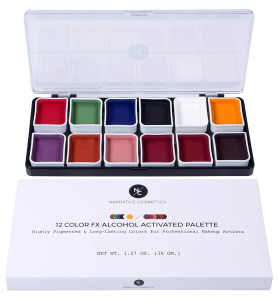

This body paint can also be utilized for special effects purposes or to design airbrushed tattoos and markings. It works well in warm, hot environments or even for aquatic body art. Because alcohol-based paints are formulated to be waterproof, perspiration will not cause them to split or peel. Nevertheless, it is not smudge-proof. This will peel off if contacted, so completely avoid them. Alcohol-based paints are challenging to remove and may necessitate the use of rubbing alcohol. You may have to delay another day or two while the pigment is removed from your body. It allows the skin to recover because the rubbing alcohol may hurt it.
Henna
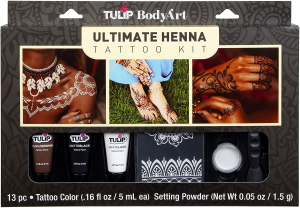

Henna, a traditional body paint, had long featured utilized for special ceremonies in African and Asian cultures. The paint was derived from plant pigment and tinted the skin a brown or red color. It is harmless for both adults and children and therefore has no adverse side effects. The pigment of the paint wears off naturally over time, and you can eliminate it more quickly by exfoliation.
Markers
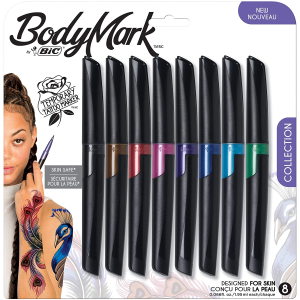

These may not be your typical day-to-day markers, which can be hazardous to your body. Body painting markers are available in a variety of colors. Such markers are typically formulated to be non-toxic and appropriate to be used by either children or adults. Many markers do indicate what areas of the body they must not be utilized on. Try your best to examine the instructions to determine how to do it appropriately. All of the above-mentioned points are appropriate to use on your body but should not harm it. When using any form of body paint, it would be best to do your research. Put it on an area of your body and wait a few minutes to see whether it irritates it. It is the most accurate approach to determine if the body paint would fit you.
Commercial Body Paint


Non-toxic body paint in spray cans or bottles is mass-produced by certain corporations. Since they don’t include latex, these comprise a few of the least dangerous body paints currently available. Nevertheless, experiment with different sorts to ensure that they are suitable for the body.
Latex Body Paint
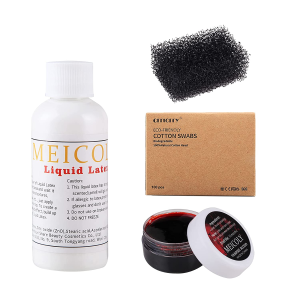

Bodypaint can be made from latex or liquid latex. It’s a terrific alternative for performers because it’s less expensive than custom sets and costumes. As opposed to other kinds of body paint, latex paint does not leave significant traces. There are a few things you should think about it before applying Latex body paint. To begin, ensure that you do not have allergies to latex. When you’re sensitive to latex, you wouldn’t want that on the skin. Furthermore, do not use latex in extreme temps since it can induce heat exhaustion. It has the effect of preventing the body from profusely sweating. This form of body paint should not be used on skin that has been injured or inflamed.
Water-Based Paint
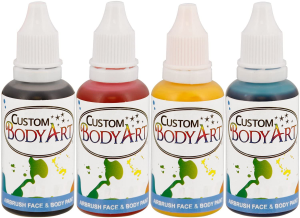

Several water-based paints are closely restricted and follow strict regulations, allowing them the least harmful alternative for face and body paint. Water-based paints contain lower levels of volatile organic chemicals (VOCs). They do, nevertheless, shatter and wipe off readily, rendering them unsuitable for body art. In terms of body and face paint, this is your best bet. Several of the water-based paints on the market today are increasingly controlled and must adhere to tight rules in order to be approved. It’s wonderful for children to use any way it’s non-toxic and readily washed away afterward usage. Certain kinds of colors are not really the ideal choice of body points for contractual provisions, including a modeling contest.
Metallic Body Paint
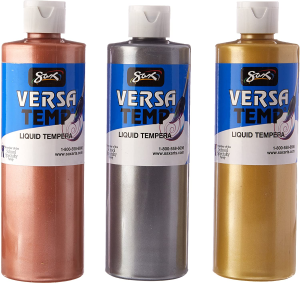

This body paint has a bright, metallic appearance. Metallic paints, on the other hand, should be used with caution because they contain genuine metal particles, which can cause discomfort and skin irritation. It’s preferable to avoid metallic paint if you use it for a presentation. All those paints are used with precaution because the metallic powder ingredient in them is prone to aggravate the skin. However, it does not wash off as quickly as water-based paint. It is indeed simply wise to avoid it unless strictly essential for a presentation.
Can Acrylic Be Used on the Skin?
It is not advisable to use acrylic paint on the skin. But it is not harmful if non-toxic, water-based paint comes into contact with your hands when painting, crafting paints must not be applied directly to the body. This might result in skin discomfort, irritation, and allergy symptoms. Acrylic paint, for instance, may not be as hazardous for the skin as oil-based paints. Furthermore, everyone’s skin responds differently. Children as well as those with sensitive skin types should wear neoprene protective gear to prevent coming into touch with acrylic paints.
What Paint Type Can be Used on the Face?
Water-based pigments have been most generally used to produce face and body paint. The government regulates these paints, as well as the corporations that make these should adhere under tight criteria too though. Acrylic paints include hazardous components, whereas this substance is non-toxic, contains zero hazardous materials, and is readily eliminated.
What Happens When Acrylic Paint Was Used on the Body?
Painting on the body has indeed been practiced for centuries. The painting would’ve been employed both for combat and ceremonial purposes. Bodypaint is being used on a variety of occasions, such as festive occasions, costume events, festivals, and theatrical performances. There really are numerous methods for painting the body, and it’s a positive idea the impacts aren’t long-lasting. However, the majority of face paints just aren’t skin-safe. It is important to select the right types so that you do not aggravate or injure your skin. Acrylic paint is not really the best option in body art.
